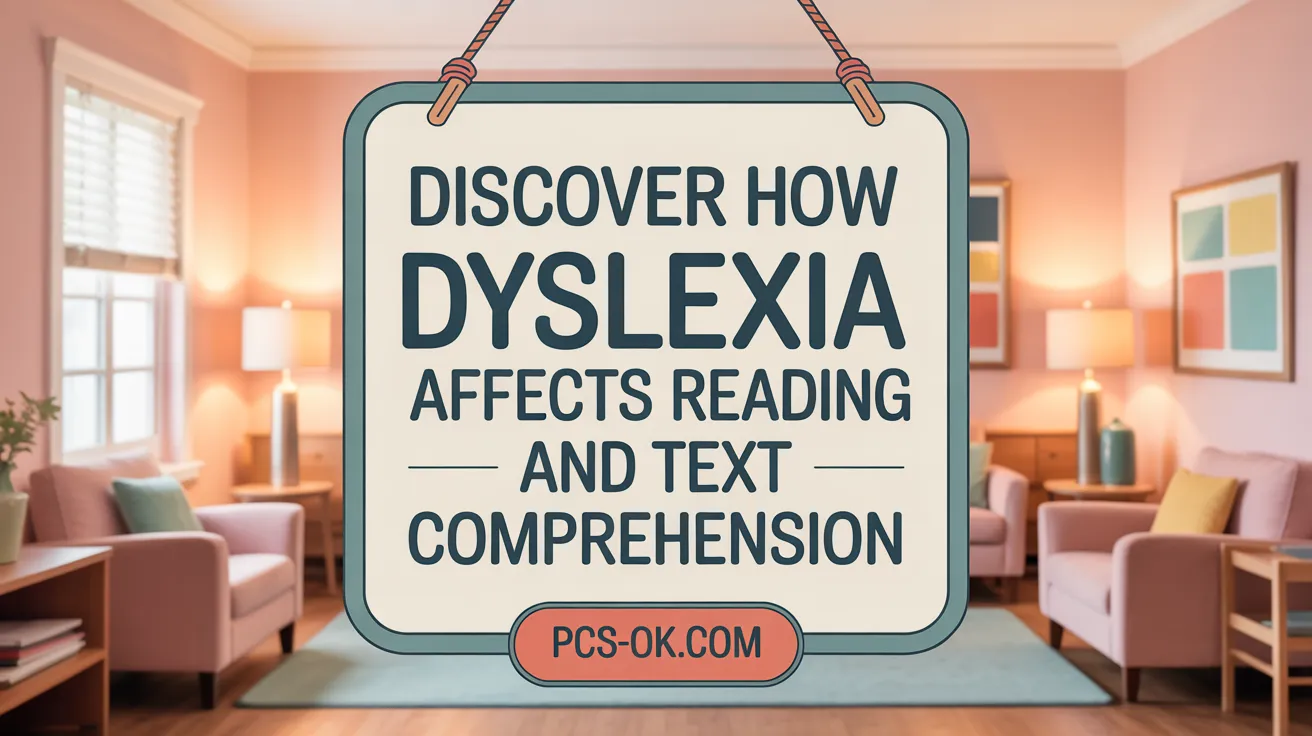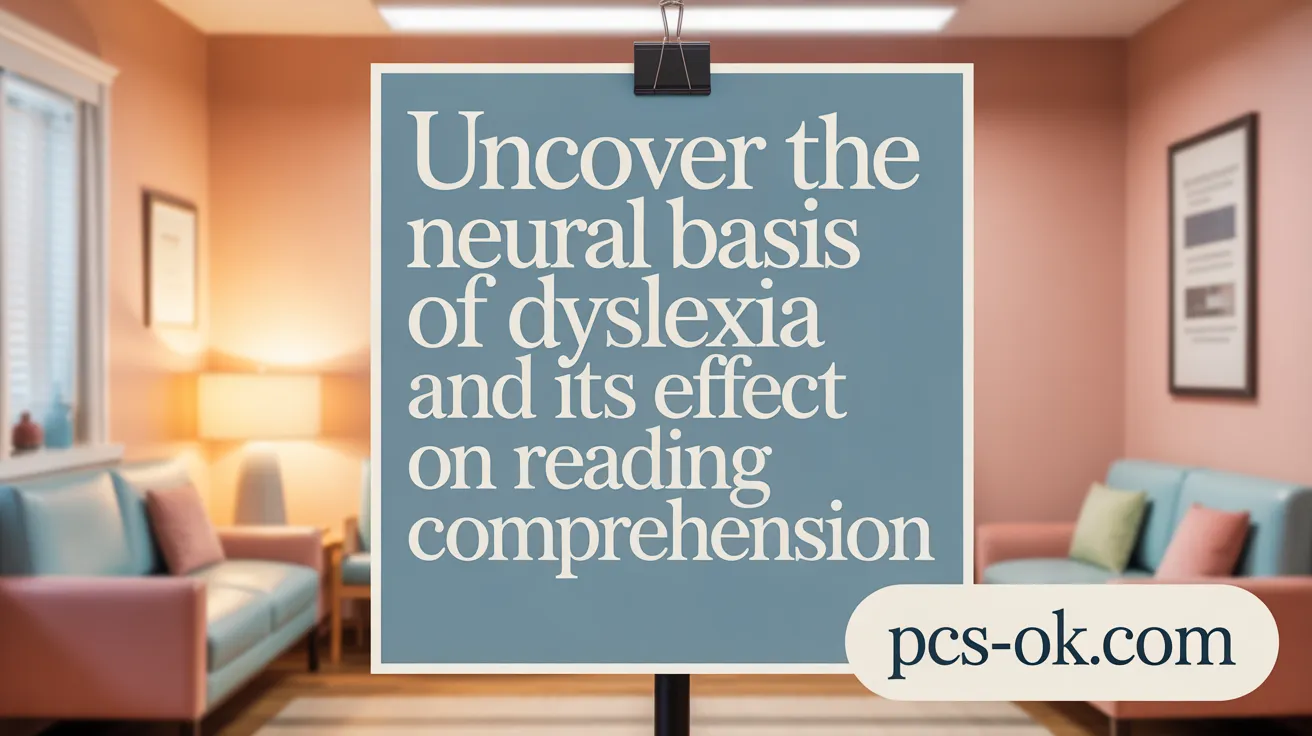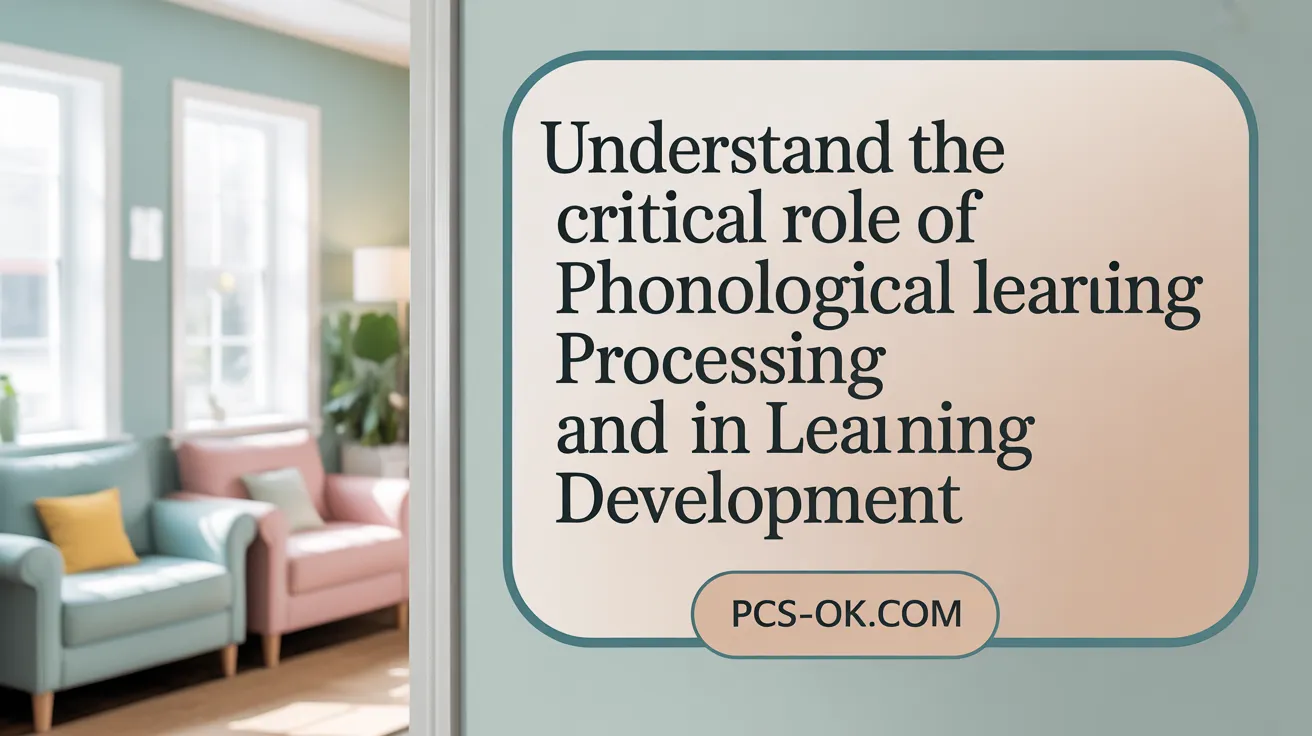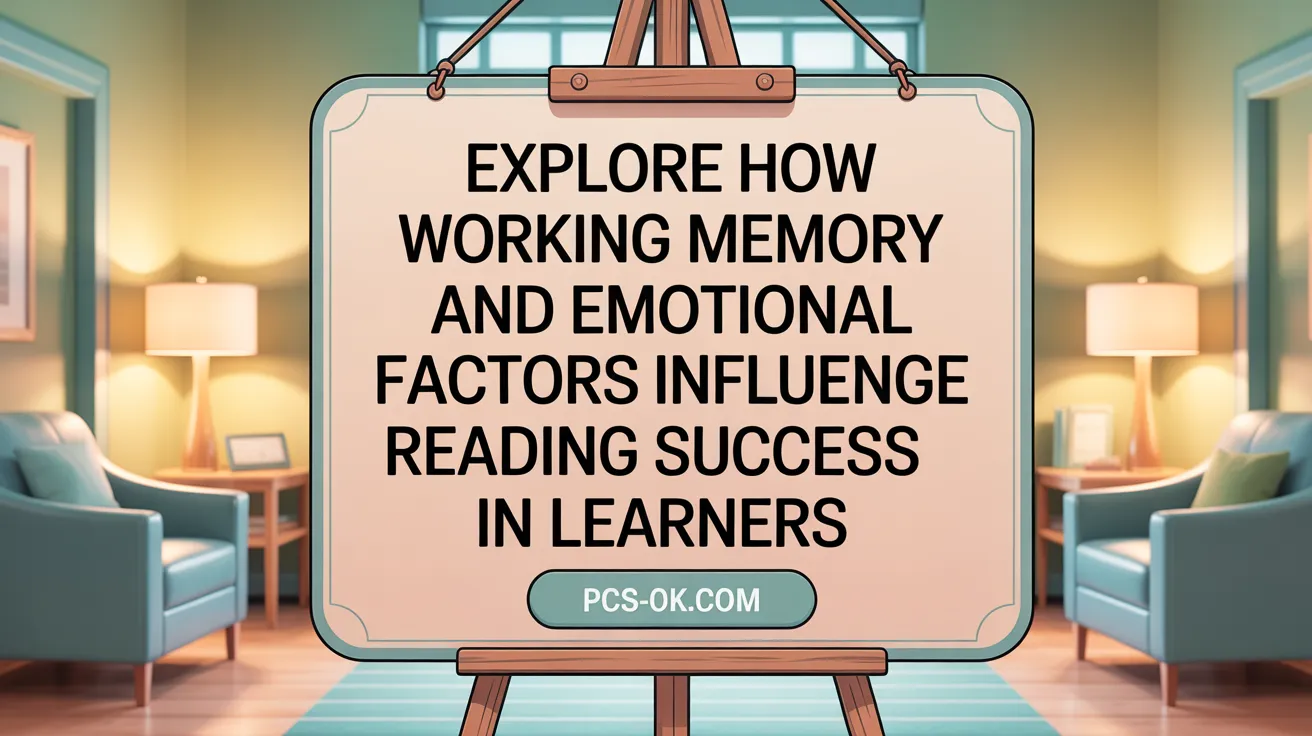How Dyslexia Affects Reading Comprehension
Introduction to Dyslexia and Its Impact on Reading
Dyslexia is a prevalent learning disorder affecting approximately 15-20% of the population, characterized by difficulties with accurate and fluent word recognition, decoding, and spelling. Importantly, these challenges are not linked to intelligence, effort, or sensory impairments but reflect underlying neurobiological differences primarily impacting phonological processing. This article explores how dyslexia affects reading comprehension, the cognitive and neurological mechanisms involved, common signs, and evidence-based strategies to support affected individuals in overcoming related challenges.
Dyslexia and Its Direct Effects on Reading Comprehension

How does dyslexia affect reading comprehension and what related challenges do individuals face?
Dyslexia often hampers reading comprehension primarily because of difficulties with decoding words. When children or adults with dyslexia struggle to recognize words accurately and swiftly, it places extra cognitive demands on their working memory and attention. This effortful decoding makes processing the meaning of the text more challenging, leading to slower reading and sometimes incomplete comprehension.
Though many with dyslexia have intact oral language skills, their struggles with phonological processing—such as hearing, manipulating, and recalling sounds in words—limit their ability to decode unfamiliar words. This can result in frequent word substitutions, misreadings, or missing words altogether, all of which interfere with understanding the overall message of a passage.
Furthermore, these decoding challenges tend to cause secondary effects, notably a limited vocabulary and reduced background knowledge. Since difficulties in decoding can slow down reading pace, individuals often spend less time engaging with new words or complex texts, hindering vocabulary development. Over time, this can impact academic achievement and limit exposure to diverse concepts.
In addition to cognitive hurdles, reading struggles can evoke emotional and motivational difficulties. Children and adults who find reading effortful may experience frustration, anxiety, or decreased confidence, which can reduce their motivation to engage with reading or new learning tasks.
Supporting individuals with dyslexia involves interventions such as explicit phonics programs, multisensory teaching approaches, and assistive technologies like text-to-speech software. These strategies aim to improve decoding accuracy and speed, enabling better comprehension.
Overall, addressing both the phonological decoding issues and the emotional impacts is vital for helping learners with dyslexia enhance their reading comprehension and foster a positive learning experience.
Common Signs and Symptoms of Dyslexia Affecting Reading Comprehension
What are the common signs and symptoms of dyslexia related to reading comprehension?
Dyslexia often manifests through specific difficulties that directly impact how individuals understand written text. One of the main signs is slow and effortful reading, where it takes longer for learners to recognize words and decode unfamiliar ones. This sluggish pace can make it difficult to keep track of what they have read, leading to challenges in understanding the overall message.
Frequent decoding errors are also common. Individuals might misread words, substitute similar-looking words, or skip over difficult words altogether. Such mistakes hinder comprehension because the reader cannot accurately grasp the text’s meaning. Poor word recognition and fluency further compound these problems, often resulting in choppy or disjointed reading.
Beyond decoding and fluency, learners with dyslexia may struggle to recall details from what they’ve read. This can make it hard to connect ideas, infer meanings, or summarize stories effectively. They often find it challenging to understand complex syntax or integrate information across sentences and paragraphs.
Spelling difficulties and written expression issues are additional signs. These often stem from underlying phonological processing and memory challenges that interfere with learning letter-sound relationships and organizing thoughts coherently.
The cumulative effect of these signs can be a reduced vocabulary development and limited background knowledge, which are crucial for building reading comprehension skills. Early identification of these symptoms allows for targeted intervention, improving reading outcomes and fostering greater confidence in learners with dyslexia.
Cognitive and Neurological Foundations of Dyslexia’s Impact on Comprehension

What cognitive and neurological mechanisms underlie dyslexia’s impact on reading comprehension?
Dyslexia affects how the brain processes language, especially in areas involved in decoding, phonological awareness, and visual word recognition. The core issue lies within specific neural circuits in the left hemisphere of the brain.
Research shows that regions such as the temporoparietal cortex, Broca’s area, and the visual word form area (VWFA) are crucial for effective reading. In individuals with dyslexia, these areas often exhibit reduced activity or atypical development. This leads to difficulties in phonological processing, which is essential for decoding unfamiliar words and understanding their meaning.
Structural differences are also evident. Thinner cortex and abnormal asymmetry between the hemispheres disrupt the normal flow of information. For instance, white matter pathways like the arcuate fasciculus, which connects language comprehension and production regions, tend to be less robust. These compromised connections hinder the integration of auditory, phonological, and visual information, making decoding and word recognition more effortful.
Functional neuroimaging studies reveal hypoactivation in these key areas during phonological tasks, indicating that brains of those with dyslexia often work differently than typical readers. Such patterns point to abnormal neural activation rather than mere developmental delays.
These neural differences impact skills such as phonemic awareness, processing speed, and working memory. When these foundational skills are impaired, children struggle to quickly and accurately recognize words, which decreases reading fluency and hampers understanding.
Early structural and functional anomalies highlight that dyslexia involves specific neural circuitry dysfunctions. Targeted interventions, including explicit phonics and multisensory approaches, can help rewire these pathways and improve reading abilities.
| Brain Regions | Role in Reading | Impact of Dyslexia | Neural Connectivity Issues |
|---|---|---|---|
| Temporoparietal Cortex | Phonological decoding | Impaired phoneme recognition | Reduced white matter integrity |
| Broca’s Area | Speech production and processing | Difficulties in phonological manipulation | Disrupted neural pathways |
| Visual Word Form Area (VWFA) | Word recognition | Struggles in recognizing familiar words | Atypical activation patterns |
| Arcuate Fasciculus | Connects language regions | Poor integration of phonological and semantic information | Less robust connectivity |
Understanding these neural underpinnings underscores how dyslexia is not merely a learning difficulty but a specific neurobiological condition. With targeted educational strategies and technological aids, there is potential to strengthen these neural pathways and facilitate better reading comprehension for individuals with dyslexia.
Phonological Processing and Its Central Role in Dyslexic Reading Challenges

What is phonemic awareness and how does it affect dyslexic readers?
Phonemic awareness refers to the ability to hear, identify, and manipulate individual sounds, known as phonemes, within words. In children with dyslexia, this skill is often weak or absent. This deficit makes it difficult for them to connect sounds to letters, which is fundamental for decoding words.
How does it influence decoding and spelling?
Since decoding involves sounding out unfamiliar words, phonological processing deficits directly impair this ability. Struggling to analyze sounds slows down reading and leads to frequent misreads. The difficulty with phonemic awareness also hampers spelling because learners cannot easily segment words into their constituent sounds, leading to persistent spelling errors.
What is the connection with verbal memory and processing speed?
Weak phonological skills impact verbal memory, making it harder for students to hold and recall sound sequences. This challenge is compounded when processing speed is slow, which is common in dyslexia. Together, these issues hinder the rapid automatic recognition of words, essential for fluent reading and comprehension.
Why do these deficits lead to slow and inaccurate word recognition?
The core problem lies in the ability to efficiently decode, which causes slow, effortful reading. As a result, students often guess words or skip over parts of text, leading to inaccuracies. This constant struggle can diminish comprehension, making reading a challenging and frustrating task.
By understanding these interconnected aspects of phonological processing, educators can craft targeted interventions. Teaching explicit phonemic awareness skills helps strengthen decoding, spelling, and ultimately, reading fluency and comprehension.
| Aspect | Impact | Additional Note |
|---|---|---|
| Phonemic Awareness | Difficulties in hearing and manipulating sounds | Fundamental for decoding and spelling |
| Decoding | Slow and inaccurate recognition of words | Affects fluency and comprehension |
| Spelling | Persistent errors due to phonological gaps | Challenges with sound segmentation |
| Verbal Memory | Struggles with holding sound sequences | Impacts decoding speed and accuracy |
| Processing Speed | Slower recognition leads to fatigue | Reduces overall reading fluency |
Understanding the role of phonological deficits offers a clearer path for supporting students with dyslexia through specialized phonics instruction and multisensory learning methods.
The Simple View of Reading: Decoding and Language Comprehension in Dyslexia

Explanation of Simple View of Reading
The Simple View of Reading is a model that explains reading comprehension as the product of two essential skills: decoding and language comprehension. Decoding involves translating written symbols into spoken words — a process heavily impacted in dyslexia. Language comprehension refers to understanding spoken language, including vocabulary and sentence structure.
In students without reading difficulties, both components work seamlessly, leading to effective comprehension. However, in dyslexia, decoding skills are often weak, which can hinder the ability to recognize words quickly and accurately.
How decoding deficits impair comprehension
Dyslexia primarily affects the ability to decode unfamiliar words due to deficits in phonological processing and phonemic awareness. When decoding is slow or inaccurate, students struggle to read words correctly, often substituting or skipping words.
This difficulty results in a limited reading speed and fluency, which can overwhelm working memory. As a consequence, students may find it hard to keep track of what they’ve read, thereby reducing their understanding of the text.
Poor decoding skills also mean reading is more effortful, detracting from the mental resources available to derive meaning, make connections, or infer unseen ideas, leading to overall diminished comprehension.
Relationship between oral language skills and reading
Oral language development at an early age lays the groundwork for later reading skills. Skills such as vocabulary, grammar, and story understanding significantly influence a child’s ability to comprehend written texts.
Children with dyslexia often show early difficulties with phonological tasks and vocabulary, which are strong predictors of later decoding and comprehension challenges. Insufficient oral language skills can exacerbate decoding problems, making it even more difficult for students to understand texts.
Impact of dyslexia on language and comprehension interplay
Dyslexia’s impact on the brain affects regions involved in visual processing, language understanding, and speech production. This neurodevelopmental divergence complicates the connection between decoding and comprehension.
Students with dyslexia may understand spoken language well but struggle to connect these skills to reading because of impaired decoding abilities. Over time, this disconnect can lead to frustration, reduced motivation, and limited exposure to varied vocabulary and concepts.
To improve outcomes, interventions should address both decoding and oral language development, utilizing systematic phonics instruction combined with vocabulary-building activities and comprehension strategies. This comprehensive approach helps bridge the gap between decoding and understanding, fostering better reading skills in students with dyslexia.
Effective Strategies and Interventions to Support Dyslexic Readers
What strategies and interventions support reading comprehension for individuals with dyslexia?
Supporting reading comprehension for individuals with dyslexia involves a comprehensive, evidence-based approach that includes structured literacy methods emphasizing explicit, systematic instruction in decoding, phonology, morphology, syntax, and semantics.
One of the most effective techniques is explicit and systematic phonics instruction. This approach teaches children the relationship between sounds and letters thoroughly, helping them decode unfamiliar words more accurately and fluently. Using multisensory learning approaches further boosts understanding. Activities such as sand tracing, tactile letter cards, or arm tapping help engage multiple senses, making abstract phonological concepts more concrete.
Assistive technologies like text-to-speech software, reading pens, and specialized fonts support learners by reducing decoding difficulties and easing access to written content. These tools can help students focus on understanding rather than struggling with decoding every word.
Early detection and screening for language difficulties allow for timely intervention. Response to Intervention (RTI) strategies enable educators to tailor support based on individual needs, addressing specific phonological or language deficits.
Practical classroom accommodations are also vital. Extending test time, providing audiobooks, and allowing oral responses can alleviate the pressures of decoding and foster confidence. Digital tools, such as electronic books with dyslexia-friendly fonts, improve readability and engagement.
Developing vocabulary and oral language skills plays a crucial role too. Explicit teaching of word meanings, synonyms, antonyms, and figurative language helps build a more robust mental lexicon. This, in turn, enhances comprehension and the ability to infer meaning from texts.
Furthermore, incorporating activities that focus on story structure, summarization, and making inferences strengthens understanding. Teachers might use graphic organizers, guided reading, and discussion strategies to promote deeper comprehension.
Finally, emotional support and encouragement are essential. Recognizing progress and fostering a positive learning environment help maintain motivation and reduce frustration associated with ongoing learning challenges.
| Strategy Category | Description | Examples |
|---|---|---|
| Phonics Instruction | Systematic teaching of sound-letter relationships | Phonics games, decoding drills |
| Multisensory Approaches | Engaging multiple senses for better retention | Sandwriting, tactile letter tiles |
| Assistive Technology | Tools that aid reading and spelling | Text-to-speech, dyslexia fonts |
| Vocabulary & Language | Building language understanding | Word maps, explicit vocabulary lessons |
| Classroom Supports | Accommodations and teaching methods | Extra time, oral testing |
By combining these strategies, educators can create a supportive learning environment that addresses the specific needs of students with dyslexia, helping them improve reading skills and overall academic success.
Educational Approaches Tailored for Dyslexic Learners
What educational approaches are effective for aiding dyslexic learners in understanding texts?
Supporting students with dyslexia requires specific teaching strategies that address their unique challenges. One proven approach is multisensory instruction, which involves engaging multiple senses such as touch, sight, and hearing. Activities like sand writing, where students form letters in sand while saying the sounds, and blending exercises that combine sounds and letters, help reinforce phonological processing.
Structured literacy programs are also essential. These focus heavily on phonemic awareness—the ability to hear, identify, and manipulate individual sounds in words—and decoding skills. Explicit, systematic teaching of phonics, word recognition, and fluency supports reading accuracy and speed.
In addition, using assistive technology significantly benefits dyslexic learners. Tools like text-to-speech software, digital scanning pens, and audiobooks enable students to access texts more easily and improve comprehension. Classroom accommodations, such as extended test times, quiet spaces, and providing visual aids like graphic organizers, help create a more inclusive environment where these students can thrive.
Creating a supportive classroom atmosphere involves proactive strategies like preteaching vocabulary before lessons, offering supplementary notes, and breaking down tasks into smaller, manageable steps. These methods reduce cognitive load and make learning less overwhelming.
Immediate implementation of strategies and resources—like assistive devices and tailored instruction—helps students develop confidence and independence. Ensuring these supports are in place from the outset fosters an environment where dyslexic students can understand, engage with, and enjoy texts more fully.
| Strategy | Techniques | Purpose |
|---|---|---|
| Multisensory Learning | Sand writing, visual aids, tapping | Reinforce sounds, spelling, and letter recognition |
| Structured Literacy | Phonics, decoding lessons | Improve phonemic awareness and word recognition |
| Assistive Technology | Text-to-speech, audiobooks | Enable access to texts and support comprehension |
| Classroom Accommodations | Extra time, visual supports | Reduce anxiety and accommodate learning needs |
| Proactive Classroom Environment | Pre-teaching, small steps | Build confidence and reinforce understanding at pace |
By combining these strategies, educators can create a flexible, engaging, and effective learning environment tailored to the needs of dyslexic learners, helping them develop stronger reading skills and greater confidence.
Insights from Research: Dyslexia’s Influence on Reading and Comprehension
What do current research findings reveal about dyslexia’s influence on reading and comprehension skills?
Recent studies highlight that dyslexia is primarily marked by difficulties with phonological processing, which affects fundamental reading skills such as word recognition, decoding unfamiliar words, and reading fluency. These challenges often lead to slower reading speeds and inaccuracies, which hinder the ability to derive meaning from texts efficiently.
Contrary to earlier beliefs that associated dyslexia with severe impairment, contemporary research shows it exists on a spectrum. This means that the severity can vary significantly among individuals, influencing how much the difficulty impacts their reading and comprehension. Prevalence estimates suggest that about 15-20% of the population experience some form of dyslexia, with variability depending on how it’s defined and assessed.
Neurobiological and genetic studies reveal that dyslexia involves structural and functional differences in brain regions related to language processing. Brain imaging shows that individuals with dyslexia often display under-activation in areas responsible for phonological decoding and over-activation in other regions as potential compensatory mechanisms. These neural patterns can be detected in early childhood, often before formal reading instruction begins.
Importantly, research underscores the brain’s plasticity—its ability to reorganize and adapt. Effective interventions focused on phonemic awareness and decoding skills can encourage changes in neural pathways, leading to improved reading fluency and comprehension. Such interventions harness neural plasticity to support reading development.
Many individuals with dyslexia develop compensatory strategies, such as relying more heavily on vocabulary knowledge, listening comprehension, or contextual clues. These strategies enable better understanding of texts despite ongoing fluency challenges. For example, a child with dyslexia might focus on grasping the overall story or conversation rather than decoding every word.
Overall, current research emphasizes that dyslexia impact spans beyond decoding to influence comprehension directly. While it presents specific neural and cognitive challenges, targeted educational support and intervention programs can foster neural reorganization and improve literacy outcomes. Understanding the complex interplay of biological, cognitive, and environmental factors remains crucial for tailoring effective support for individuals with dyslexia.
Broader Challenges Beyond Decoding: Working Memory, Fluency, and Emotional Impact

How do working memory limitations in learners with dyslexia affect reading?
Individuals with dyslexia often struggle with working memory, which is essential for holding and processing information while reading. When working memory is weak, students find it difficult to keep track of sounds, words, or even parts of a sentence long enough to decode or understand the text. This extra cognitive load can make reading a slow and effortful task.
How does a slow reading pace influence comprehension?
Because decoding unfamiliar words is challenging for students with dyslexia, they tend to read more slowly. This sluggish pace places additional demands on working memory, making it harder to focus on understanding the overall meaning. As a result, these learners often miss key details, struggle with grasping the main ideas, and experience increased frustration.
What emotional effects can dyslexia have?
Repeated difficulties in decoding, fluency, and comprehension can lead to feelings of frustration, low self-esteem, and anxiety. Kids may develop a sense of failure or fear of reading, which can diminish their motivation and willingness to engage in reading activities.
What are the social and academic consequences?
These emotional and cognitive challenges can impact both social interactions and academic performance. Children with dyslexia might isolate themselves to avoid reading tasks or be reluctant to participate in class. Over time, these difficulties can hinder overall learning, affect confidence, and influence social relationships.
| Challenge | Impact | Strategies and Supports |
|---|---|---|
| Working memory limitations | Slower decoding, difficulty understanding text | Use of visual aids, breaks, multisensory methods |
| Slow reading pace | Reduced comprehension, increased frustration | Audiobooks, assistive technology, guided reading |
| Emotional challenges | Low self-esteem, anxiety, frustration | Positive reinforcement, counseling, supportive environments |
| Social and academic implications | Reduced participation, lower achievement | Accommodations, peer support, targeted interventions |
Understanding these wider challenges highlights the importance of comprehensive support for learners with dyslexia. Addressing not only decoding skills but also emotional and cognitive factors can help foster better reading experiences and confidence.
Toward Better Understanding and Support for Dyslexic Readers
Dyslexia profoundly influences reading comprehension through its impact on decoding, phonological processing, and related cognitive mechanisms. While these challenges pose significant barriers, ongoing research increasingly illuminates the underlying neurological and cognitive foundations, enabling more targeted and effective interventions. Educators, parents, and clinicians can foster improvements in reading abilities and comprehension by implementing evidence-based instructional methods, multisensory approaches, and technological aids. Recognizing the emotional and motivational aspects is equally vital to provide holistic support and build self-confidence in learners with dyslexia. Continued advances in neuroscience and education promise optimism for enabling individuals with dyslexia to achieve literacy success and engage fully with text-based learning.
